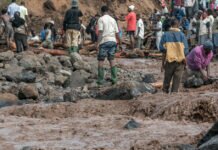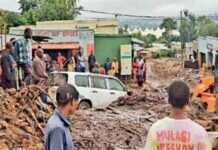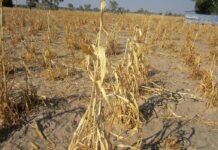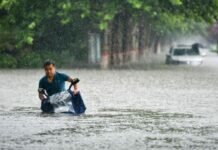At least 115 people have been killed and several injured during heavy flooding in Rwanda, according to state-run Rwanda Broadcasting Agency (RBA).
The RBA on its official website said the rain caused disasters in the North and West Provinces.
The most affected region by the disaster, the Western Province, left 95 people dead.
Whereas, fourteen people were killed in the Northern province.
“We extend our deepest condolences to the families of the victims during this difficult time,” Northern Province governor Dancille Nyirarugero said. “We are working closely with local authorities and emergency services to provide relief efforts and support to those affected by this disaster.”
The latest weather forecast by Rwanda Meteorology Agency indicated that the expected rainfall in many parts of the country will be slightly above the range of rainfall usually recorded in May.
According to a recent report by the ministry in charge of emergency management, more than 60 people were killed by disasters in the country between Jan. 1 and April 20.
Landslides kill five members of one family in Uganda
At least six people, including five members of the same family, were killed by landslides triggered by torrential rains in several villages in western Uganda, a relief agency said on Wednesday.
Five people from one family in Biizi village and another one in Gihuyaga village, both in Murora sub-county in the western district of Kisoro, were killed, said Irene Nakasiita, spokesperson for the Uganda Red Cross Society.
“Red Cross response teams are on ground, and also involved in exhumation and management of the dead, together with the local authorities and community members,” Nakasiita said in a statement.
Uganda last month issued a disaster alert warning that parts of the east African country will face floods, landslides, mudslides, hailstorms, and lightning as the first rain season starts.
According to the Ministry for Relief, Disaster Preparedness and Refugees, parts of eastern, central, western regions and the Lake Victoria basin would experience near-normal to above-normal forms of rainfall up to May.
Heavy rainfall is likely to lead to the destruction of farmland, crops and a surge of water-related diseases such as typhoid, cholera, dysentery and malaria.














































